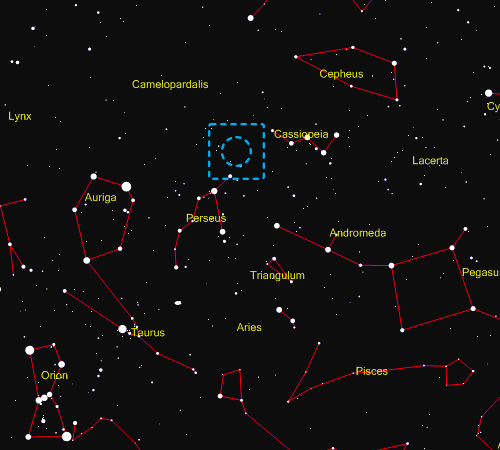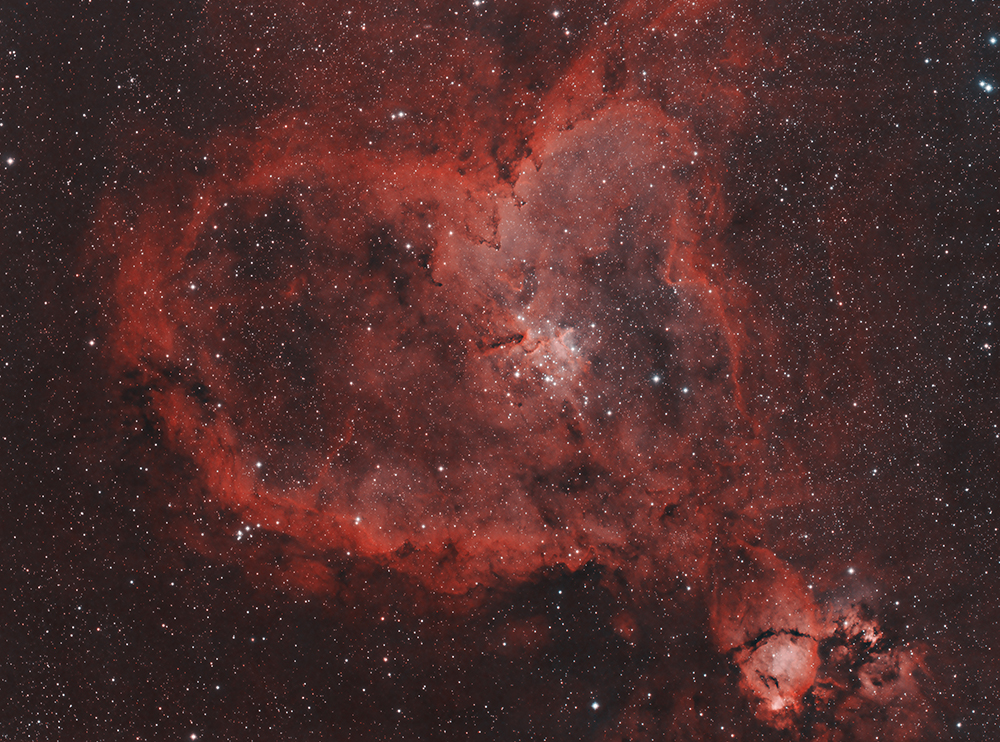NAME:
CATALOGUE:
OBJECT TYPE:
CONSTELLATION:
DISTANCE:
APPARENT MAGNITUDE:
APPARENT SIZE:
DIAMETER:
DISCOVERY:
BEST VIEWED IN:
RIGHT ASCENSION:
DECLINATION:
TELESCOPE:
DATA GATHERED:
EXPOSURES:
TOTAL TIME: |
|
The Heart Nebula
IC 1805 / NGC 896
Emission Nebula
Cassiopeia
7,500 light years
18.3
120 x 120 arcminutes
260 light years
1787, William Herschel
November
02h 34m 44s
+61º 30’ 21”
Skywatcher 80ED & 0.85x Reducer
6 nights, October & November 2014
Hα = 10 x 1800s & 12 x 1800s
OIII = 6 x 1800s & 6 x 1800s
17 hours |


